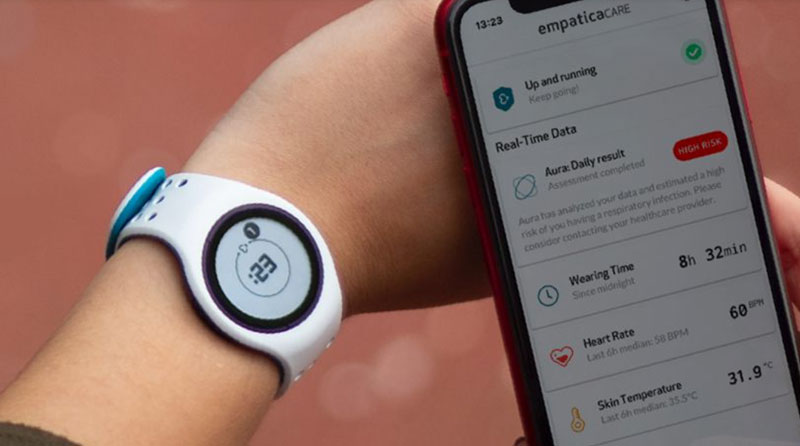Researchers at Stanford University are partnering with wearable device-maker Empatica and a COVID-19 saliva test manufacturer, Clinical Reference Lab, to gauge how wearable devices like smartwatches can detect the virus even before symptoms appear.
Related This App Combines AI and Biosensors to Detect COVID-19 in Two Minutes, Even in Asymptomatic Patients
Tejaswini Mishra, Ph.D., Research Scientist in the Department of Genetics at Stanford University School of Medicine, joins Yahoo Finance’s Alexis Christoforous to discuss the use of wearables to detect COVID-19.
“We’re using biometrics measured by these consumer smartwatches, such as heart rate, skin temperature, blood oxygen saturation, activity, electrodermal activities of skin conductance. And we’re looking for changes in these biometrics to then detect COVID-19 infection at a pre-symptomatic stage before people develop symptoms. And so we look, for example, increases in heart rate,” Dr. Mishra told Christoforous.
Just a month ago, MIT Media Labs spinoff Empatica Inc. secured the CE mark for its Aura system, a wearable solution for the monitoring and early alert of respiratory infections, including COVID-19. For use with people 14 and older, Aura is commercially available in Europe and the U.K., and for pilot purposes in the U.S. – pending FDA authorization.
Empatica, Fitbit, and Garmin are working with the Stanford team, according to Dr. Mishra.
How early can these devices detect COVID19?
“We’re able to detect it on an average of four days in advance using our algorithms, and we’re able to see it as far as nine days in advance in some cases. Now, mind you, these are studies we did on symptomatic individuals. So we did an initial study that we published in November 2020,” Dr. Mishra said.

How effective are these devices?
According to Dr. Mishra, the current devices are already pretty good at detecting COVID-19. She said that 80% of the people in their initial study, were able to detect COVID-19 with wearing only Fitbits. “And so, the current devices already work. And the cool thing about using devices that people were already wearing is that you have a year or two of retrospective data on these people. So we’re able to compare their heart rate during the COVID infection to their own personal baseline and then try to see changes or elevations in heart rate compared to their own baseline. So it’s a very personalized, individualized, tailored monitoring process,” she said.
How about the asymptomatic Carriers
A large group of people do not show symptoms of COVID-19 even after they’ve been infected with the virus. These asymptomatic individuals can spread the virus much more easily. What kinds of symptoms do asymptomatic people have?
Related Amid COVID-19 Pandemic Innovative Diagnostic Devices Helping The Healthcare System
“Even if you don’t have symptoms, your body’s still fighting an infection. Your body’s trying to clear the virus. You’re making tons of white blood cells to try to fight the virus. And so that’s where we expect your heart rate to go up. Even if you don’t have a fever, even if your skin temperature or body temperature doesn’t go up, you still have a heart rate increase because your body’s working a lot harder to fight these germs, and that’s what we’re able to detect,” Dr. Mishra said.
“Think of it as a thermometer. Your temperature is high, and you don’t know why it’s high, but you know that it indicates something. And so that’s really what we’re catching. And then the future is really, really big, and you could do any number of things with these wearable devices,” she added.












